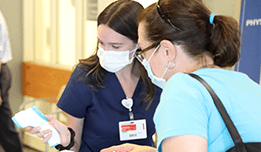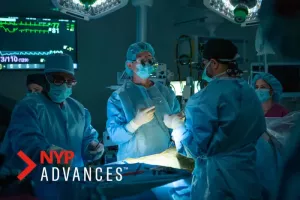Center for Youth Mental Health
(formerly the Youth Anxiety Center)

Learn why NewYork-Presbyterian is top ranked in 14 adult medical specialties and 8 pediatric subspecialties.

Get access to exceptional clinical services close to where you live, work, and even on your phone.
Doctors' Offices Near You
Digital Health

Find resources to have an exceptional patient or visitor experience.
Other Resources
Newsletters

Explore NYP Advances™ for the latest research, clinical trials, education initiatives, and more.
Search for a doctor, location, condition or treatment…
THE CENTER FOR YOUTH MENTAL HEALTH
NewYork-Presbyterian
formerly the Youth Anxiety Center
OCDs are often anxiety-based fear disorders. Our goal is to help patients overcome whatever fear or fears they may have. Compulsions can be anything from excessive hand washing to needing to organize things in an extremely precise way or repeatedly checking things such as “is the door locked?” or “is the stove off?”
These obsessions can lead to worries like “I’ll get sick if I don’t wash my hands” or having intrusive thoughts or images that are perceived as forbidden, taboo, or even aggressive that may involve harming themselves or someone else .
The core component of treatment is exposure with response prevention. This means exposing young people to whatever is scary to them without reacting with their ritual or response. By learning to do that, they can teach themselves, “Oh, maybe this thing isn’t as threatening as I thought it was,” or “this feared outcome won’t happen.” The more you practice, the more likely it is that you extinguish the fear, or learn that they can handle the feared outcome.
A classic example is excessive hand washing. A teenage girl is fearful of germs, unable to eat without the repetitive hand washing she believes will protect her from getting sick. First, we’ll do a complete evaluation to make sure we fully understand what she’s afraid of, what her rituals are, what she’s avoiding touching, how much she’s washing her hands, etc. We will also do some psychoeducation which is not just a precursor to treatment but an important part of the treatment itself. Patients need to understand what OCD is, what is anxiety is, and how cognitive behavioral therapy works. We then move on to cognitive restructuring where we ask patients to re-evaluate their thoughts to try to make them more realistic, along with teaching relaxation and problem-solving techniques. Again, the active ingredient is being exposed to whatever the person is afraid of.
In the example of handwashing, we ask this patient to slowly touch things she thinks are dirty and may start with asking her to touch a tabletop and then eat with her hands without washing first. Then we proceed to touch things that are considered to be more disgusting to show her that she can face her fears fully and be okay. Eventually, she will be able to do this on her own.
The ITP offers intensive cognitive-behavioral therapy (CBT) and exposure with response prevention (ERP). We can tailor these approaches to adolescents or young adults with obsessive-compulsive disorder, as well as other anxiety disorders including social anxiety disorder, separation anxiety disorder, panic disorder, or generalized anxiety disorder.
There has been a lot of research over the past decade that shows you get the same results whether you do treatment weekly or intensively: you can get the same outcome if you do 12 weeks of treatment, one hour a week, or 12 hours of treatment within a single week. The idea is that condensing treatment doesn’t make it less effective. Some people like it better knowing that they are likely to experience tremendous improvement in a week or two. This can be especially appealing to families and youth who are suffering greatly and are desperate for symptom relief. If a young person’s ability to function is so impeded that, for example, they can’t go to school, it’s wonderful to have this opportunity to achieve results rapidly.
We do have flexibility in the way we apply treatment strategies and the schedules that we apply them. None of what we do is one-size-fits-all. We offer three to ten hours of treatment sessions per week, including group, individual, and family sessions. Our child and adolescent after-school programs have groups that meet three times a week, along with individual, and family sessions that can be adapted to the participants’ schedules. Our program for young adults involves one or more clinicians from the Youth Anxiety Center.
Yes. Depending on the young person and what their needs are, parents and families may be present. We do want to make certain that families are actively involved in understanding and supporting the treatment. However, we personalize our approach to each individual and his or her issues and life situation.
There are scales used in research studies and for clinical purposes called the Yale-Brown Obsessive-Compulsive Scale (Y-BOCS), and the Children’s Yale-Brown Obsessive-Compulsive Scale (CY-BOCS) that look at a person’s obsessions and compulsions, how much time they take up and interfere in someone’s life, how much control a person has over them, and other areas of impairment. It’s a very reliable measure of the severity of symptoms. In the Intensive Treatment Program, we administer these scales at the beginning and end of treatment with excellent results. Over 85 percent of patients with OCD completed a full course of treatment as recommended, with the remainder switching to a different level of care. The patients with a primary diagnosis of OCD who completed the program as recommended showed an average 46 percent reduction in their score on these scales, while 82 percent of these participants met responder or remission status.
Our goal is for the program to grow and evolve to match the needs of our patients. We also want to incorporate a training component so that other clinicians can learn our techniques and take them beyond our walls to more young people and families.
We use cookies and other tools to analyze usage of our website and to help improve it. Some of these cookies are necessary for the website to function and cannot be switched off in our systems. Other cookies allow us to count visits and traffic sources so we can measure the performance of our site. All information these cookies collect is aggregated and therefore anonymous. You can set your browser to block or alert you about these cookies, but some parts of the website will not work as a result. For cookies that are not necessary, you can grant your consent(s) to use your data for specific purposes below or by clicking "Agree to all."